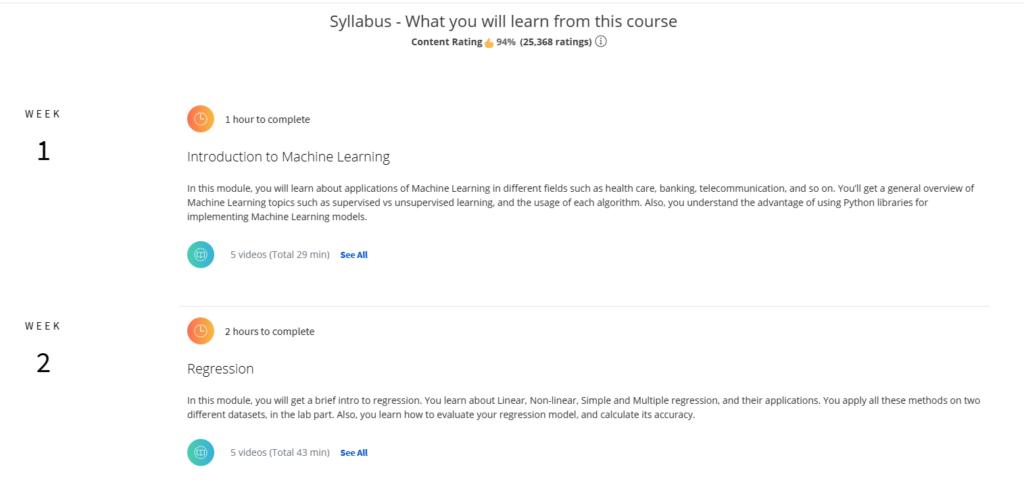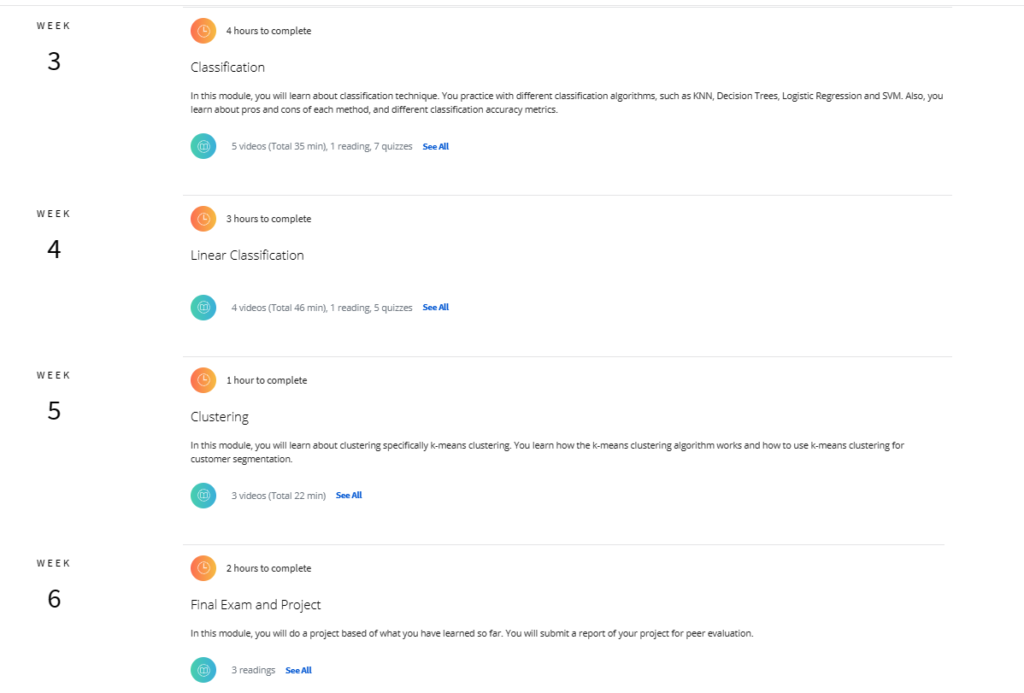
Supervised learning
Unsupervised learning
Regression learning
SVM
Requirements
- install numpy matplotlib and pandas
Description
Machine Learning tutorial provides basic and advanced concepts of machine learning. Our machine learning tutorial is designed for students and working professionals.
Machine learning is a growing technology which enables computers to learn automatically from past data. Machine learning uses various algorithms for building mathematical models and making predictions using historical data or information. Currently, it is being used for various tasks such as image recognition, speech recognition, email filtering, Facebook auto-tagging, recommender system, and many more.
This machine learning tutorial gives you an introduction to machine learning along with the wide range of machine learning techniques such as Supervised, Unsupervised, and Reinforcement learning. You will learn about regression and classification models, clustering methods, hidden Markov models, and various sequential models.
When you tag a face in a Facebook photo, it is AI that is running behind the scenes and identifying faces in a picture. Face tagging is now omnipresent in several applications that display pictures with human faces. Why just human faces? There are several applications that detect objects such as cats, dogs, bottles, cars, etc. We have autonomous cars running on our roads that detect objects in real time to steer the car. When you travel, you use Google Directions to learn the real-time traffic situations and follow the best path suggested by Google at that point of time. This is yet another implementation of object detection technique in real time.
Let us consider the example of Google Translate application that we typically use while visiting foreign countries. Google’s online translator app on your mobile helps you communicate with the local people speaking a language that is foreign to you.
There are several applications of AI that we use practically today. In fact, each one of us use AI in many parts of our lives, even without our knowledge. Today’s AI can perform extremely complex jobs with a great accuracy and speed. Let us discuss an example of complex task to understand what capabilities are expected in an AI application that you would be developing today for your clients.
Example
We all use Google Directions during our trip anywhere in the city for a daily commute or even for inter-city travels. Google Directions application suggests the fastest path to our destination at that time instance. When we follow this path, we have observed that Google is almost 100% right in its suggestions and we save our valuable time on the trip.
You can imagine the complexity involved in developing this kind of application considering that there are multiple paths to your destination and the application has to judge the traffic situation in every possible path to give you a travel time estimate for each such path. Besides, consider the fact that Google Directions covers the entire globe. Undoubtedly, lots of AI and Machine Learning techniques are in-use under the hoods of such applications.
Considering the continuous demand for the development of such applications, you will now appreciate why there is a sudden demand for IT professionals with AI skills.
Who this course is for:
- Python developers curious about Data Science
- Machine learners
- Computer Science Engineers
Course content



